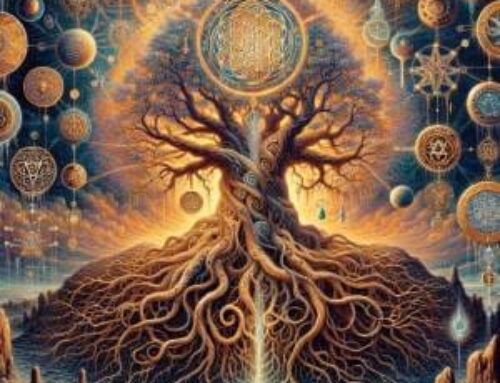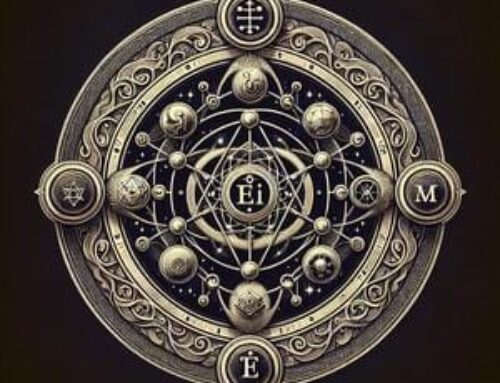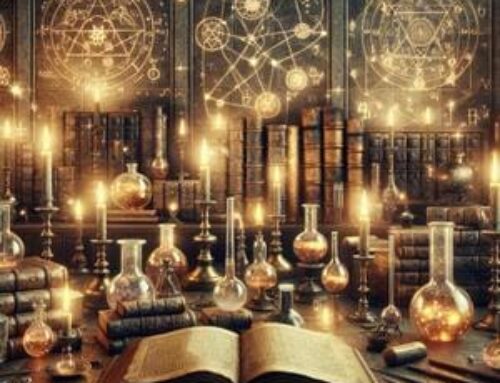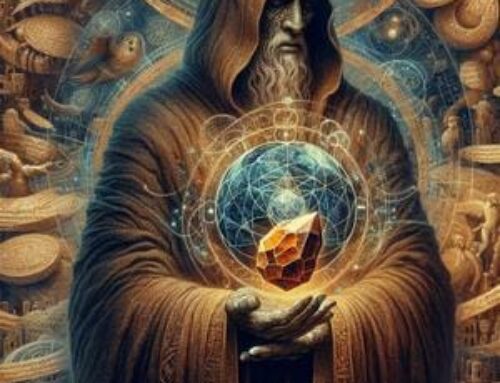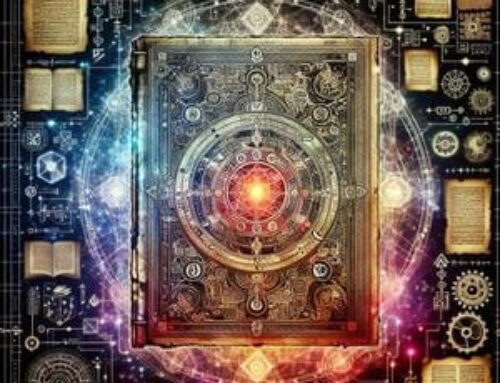Contents
- 1 Introduction to “Alchemy Symbols and Meanings”
- 2 Alchemy Symbols and Meanings: Beyond Gold
- 3 The Philosopher’s Stone: Symbolism of Transformation
- 4 Mercury and Sulphur: The Dual Nature of Reality
- 5 The Green Lion and The Red Dragon
- 6 The Seven Metals
- 7 The Four Elements
- 8 Summary of “Alchemy Symbols and Meanings”
- 9 FAQ- Alchemy Symbols and Meanings
- 9.1 1. What does the Philosopher’s Stone symbolize in alchemy?
- 9.2 2. What is the significance of Mercury and Sulphur in alchemy?
- 9.3 3. What do the Green Lion and the Red Dragon symbolize?
- 9.4 4. How do alchemical symbols relate to spiritual transformation?
- 9.5 5. Where can I study more about alchemy and its symbols?
- 10 References
Introduction to “Alchemy Symbols and Meanings”
Alchemy Symbols and Meanings, that mysterious mingling of science, philosophy, and spirituality! A dance of symbols weaving intricate tapestries of meanings that tickle the mind and soul. These symbols don’t merely stand for materials or processes; they are gateways into profound philosophical and spiritual realms. This piece seeks to unravel the essence of these alchemical symbols, diving into their meanings and the transformative odyssey they embody.
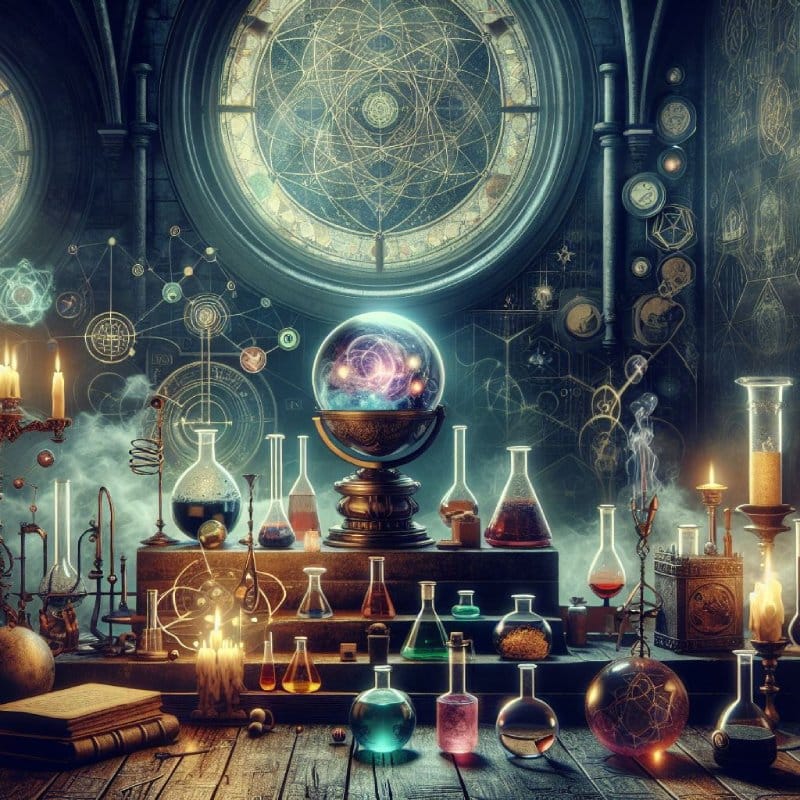
Alchemy Symbols and Meanings: Beyond Gold
Imagine, if you will, alchemy as the grandparent of modern chemistry. It’s far more than a quest to change base metals into gold. At its heart, it’s a rich, symbolic lexicon describing both the spiritual and material metamorphoses on the road to enlightenment. The symbols of alchemy serve as metaphors—beautiful, esoteric blueprints—for the processes of purification, transformation, and ultimate perfection. By decoding these symbols, one can access the hidden wisdom that alchemists have pursued for ages, bridging the material and spiritual planes into harmonious unity.
The Philosopher’s Stone: Symbolism of Transformation
The Philosophers’ Stone and the Self are complex, dynamic unities that undergo deconstruction, leading to a dynamic cycle of chaos and cosmos, preventing static visions of psychic life (1).
Enter the Philosopher’s Stone—a red stone or perhaps an elixir, glittering with the promise of ultimate transformation. It is not merely a symbol but a culmination of the alchemist’s endeavor for perfection, both materially and spiritually. To alchemists, this Stone could transmute base metals into gold and grant immortality, marking the pinnacle of their spiritual journey.
The Inner Quest
Yet, the chase for the Philosopher’s Stone is more than physical; it’s a profound inner quest for enlightenment. It mirrors the processes of distillation and sublimation, symbolizing the soul’s journey through purification and perfection.
Unity of Opposites
At its core, the Stone embodies the unity of opposites—a crucial principle in alchemy. The alchemist must harmonize conflicting forces within themselves to achieve the enlightenment the Stone signifies. This balance is reflected in the alchemical mantra “solve et coagula”—to dissolve and coagulate—emphasizing the cyclical process of deconstruction and reformation necessary for perfection.
Mercury and Sulphur: The Dual Nature of Reality
Now, let’s consider Mercury and Sulphur—fundamental symbols portraying the dual nature of reality. Mercury, linked with the god Hermes, signifies fluidity, transformation, and the bridge between the material and spiritual realms. It embodies the spirit or soul, navigating between different states of existence.
Fire and Transformation
On the flip side, Sulphur symbolizes fire, the active, masculine principle tied to the soul’s desires and passions. It’s the catalyst for transformation, sparking the processes of change and purification.
The Great Work
Together, Mercury and Sulphur form the cornerstone of the Great Work in alchemy. Their dynamic interplay is essential for the alchemical process, representing the union of spirit and matter required to achieve the Philosopher’s Stone and the enlightenment it symbolizes. Balancing these principles is crucial in the alchemist’s journey toward uncovering deeper existential truths.
Alchemy, with its symbols and metaphors, invites us to look beyond the surface and delve into the profound (2). It is a journey through the symbolic, the mystical, and the transformative—guiding us toward a richer understanding of our existence and the potential for human evolution.
The Green Lion and The Red Dragon
Symbols of Nature and Spirit
Ancient religious symbols in Egypt, Greece, and Rome are associated with nature, mystical images, and ancestral spirits, and their meaning has evolved over time (3).
Ah, the mystic dance of the Green Lion and the Red Dragon—two potent emblems in the grand theater of alchemy, each with its own narrative and symbolism. The Green Lion stands for the raw, untamed forces of nature, embodying the prima materia—the base substance from which the alchemist begins their transformative work. It symbolizes growth, regeneration, and the very potential for metamorphosis inherent in the natural world.
Spiritual Enlightenment
Conversely, the Red Dragon represents spiritual enlightenment and the zenith of the alchemical journey. This fiery creature embodies the inner flame, the transformative spirit guiding the alchemist towards the ultimate goal of spiritual rebirth and perfection. One can almost feel the heat emanating from this symbol, a beacon lighting the path to transcendence.
Journey of Transformation
The voyage from the Green Lion to the Red Dragon is the quintessential alchemical journey. It’s a passage from the initial stages of breaking down and purifying raw material to achieving spiritual enlightenment and unity with the divine. This metamorphosis mirrors the alchemist’s own spiritual evolution, striving to harmonize the physical and spiritual realms within themselves.
The Seven Metals
Alchemical Metals and Planets
In the cosmos of “Alchemy Symbols and Meanings”, the seven metals correspond to the seven ancient planets, adhering to the principle of “as above, so below.” Lead, aligned with Saturn, symbolizes the beginning of alchemical work, while gold, corresponding to the Sun, represents the pinnacle of this transformative journey. Each metal is a marker of spiritual development, a step on the path to enlightenment.
Spiritual Stages
These metals also find their counterparts in the chakras or energy centers within the human body, illustrating the macrocosm and microcosm’s interconnectedness. The alchemist’s journey through these metals is a metaphor for the purification and refinement of these energy centers, leading to the realization of the Philosopher’s Stone and ultimate spiritual enlightenment.
The Four Elements
Foundations of Matter
Earth, air, water, and fire—these four elements are the bedrock of “Alchemy Symbols and Meanings”. They represent various stages of transformation and embody the unity and diversity in creation. Each element correlates with different aspects of human personality and spiritual growth.
Transformation Processes
In alchemical practice, harmonizing and refining these elements is key to achieving the Great Work. Earth stands for stability and physicality; air signifies intellect and communication; water denotes emotions and intuition; and fire represents transformation and spiritual energy. Mastering these elements is crucial for the alchemist to attain spiritual and material perfection.
Summary of “Alchemy Symbols and Meanings”
Alchemy’s rich symbolism offers profound insights into the nature of existence and human transformation potential. Understanding these symbols allows us to appreciate the alchemical process’s relevance to our spiritual journey. The symbols guide us through self-purification, transformation, and ultimately, enlightenment. For those intrigued by these mysteries, the Hermetic Academy provides a structured path to mastering alchemy and uncovering the universe’s deeper truths.
FAQ- Alchemy Symbols and Meanings
1. What does the Philosopher’s Stone symbolize in alchemy?
A: The Philosopher’s Stone represents the ultimate goal of alchemy: transforming base metals into gold and achieving spiritual perfection and enlightenment.
2. What is the significance of Mercury and Sulphur in alchemy?
A: Mercury and Sulphur denote the dual nature of reality. Mercury symbolizes fluidity and transformation, while Sulphur represents fire and the active principle driving transformation. Together, they are essential to the alchemical process.
3. What do the Green Lion and the Red Dragon symbolize?
A: The Green Lion symbolizes the raw, untamed forces of nature and the potential for transformation. The Red Dragon signifies spiritual enlightenment and the culmination of the alchemical process, representing the inner fire and transformative power of spirit.
4. How do alchemical symbols relate to spiritual transformation?
A: Alchemical symbols are metaphors for purification, transformation, and perfection processes. They guide practitioners through self-purification and spiritual enlightenment stages.
5. Where can I study more about alchemy and its symbols?
A: The Hermetic Academy offers structured courses and guidance for those interested in mastering alchemy and exploring its deeper mysteries. The Academy provides a path to understanding and applying alchemical principles in both material and spiritual contexts.
References
(1) Marlan, S. (2013). The Philosophers’ Stone as Chaosmos: The Self and the Dilemma of Diversity. Jung Journal, 7, 10 – 23. https://doi.org/10.1080/19342039.2013.787525.
(2) Rubenstein, E. (2023). Alchemy: Secrets of Consciousness Transformation. Hermetic World, Paphos.
(3) Alimkulov, E. (2020). ANCIENT BELIEFS AND THEIR RELIGIOUS AND MYSTICAL SYMBOLS. The Light of Islam. https://doi.org/10.47980/tloi/2020/4/2.

